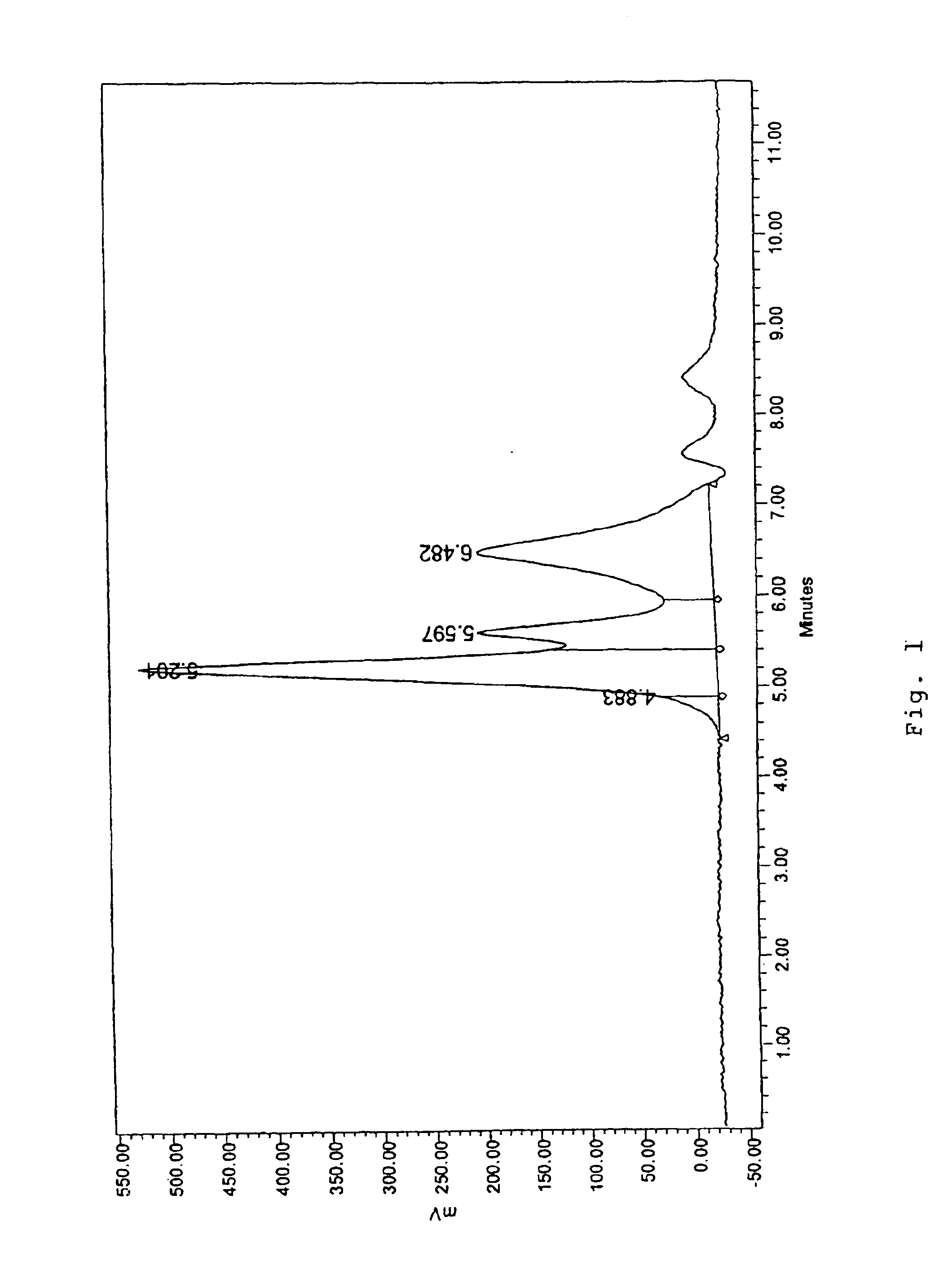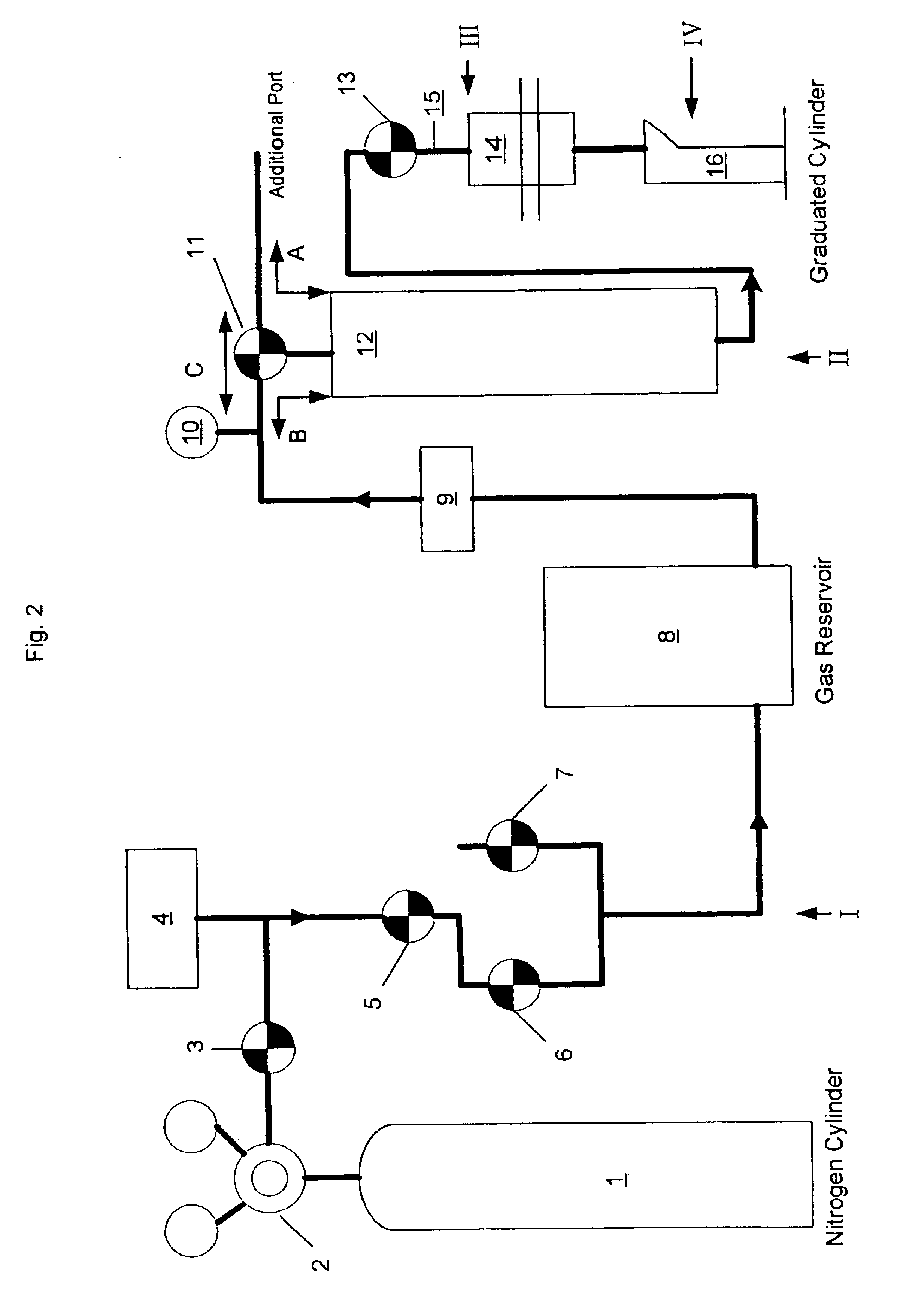Enhanced efficacy basic aluminum halides, antiperspirant active compositions and methods for making
a technology of antiperspirant active compositions and basic aluminum halides, applied in the field of new antiperspirant formulations, can solve the problems of significant increase in the cost of drying the dilute solution to powder, unsuitable high concentration of polyhydric alcohol in most antiperspirant formulations, etc., and achieve enhanced relative efficacy, enhanced efficacy, and enhanced efficacy
- Summary
- Abstract
- Description
- Claims
- Application Information
AI Technical Summary
Benefits of technology
Problems solved by technology
Method used
Image
Examples
example 1
[0054]1250 gms of 32°Be aluminum chloride solution (chemical analysis % Al=5.55, % Cl=22.19) was diluted with 1050 gms of water in a 4 liter pyrex beaker and heated to 85° C. using a hot plate. The solution was stirred with an overhead mechanical agitator; 206 gms of Alcoa (grade 101) aluminum powder was added slowly with agitation and temperature was controlled at about 95° C.±2° C. and over constant volume. The reaction was complete in 2.5 hours and the basic aluminum chloride (BAC) solution was filtered to yield a clear solution with Al:Cl atomic ratio of 1.315:1. Chemical analysis of the filtered solution was % Al 11.0 and % Cl 11.0. HPLC of the solutions were run initially and at different time intervals after aging at room temperature to study the effect of changes taking place at macromolecular level and to obtain the desired chromatographic distribution of aluminum species. Results are shown in Table III.
[0055]
TABLE IIIExample#1Days AgedA1:C1 Molar Ratio 1.315:1at R.T.Band I...
examples 2-6
[0056]Six large scale batches of BAC were prepared at Al:Cl ratio of 1.32±0.02:1 using essentially the procedure of Example 1 and were stored at room temperature and in most cases HPLCs were run after 2 to 9 months of storage at room temperature. Results are shown by Table IV and show that higher Band III concentration are obtained when solutions are aged at room temperature from about 2 to 8 months. Solution stability remains good between 2-8 months based on chromatographic results shown in Table IV. Thus, it is not required, as previously thought as necessary, to rapidly dry the solution within 0.5 hours to 24 hours to preserve the higher efficacy. In contrast, the prior art regarded it as necessary to rapid dry where activated salts are prepared by diluting previously prepared 5 / 6 basic ACH solution and to subject the product to thermal treatment at high temperatures. Such products show rapid degradation of Band III to Band II peak areas ration and are not economical to produce.
[...
example 7
[0058]45 lbs. of basic aluminum chloride solution having Al:Cl molar ratio of 1.31:1 (% Al 11.5%, % Cl 11.4% and anhydrous solids content 39.18%) prepared using the scaled-up process of this invention and aged for about four and half months at room temperature was blended with 3 lbs. of basic aluminum chloride solution having Al:Cl ratio of 1.69:1 to increase Al:Cl ratio to about 1.4:1 to reduce irritancy potential of the product. The resultant solution was spray dried in a co-current conical bottom spray dryer at an inlet temperature of 550° C. and an outlet temperature of 235° C. to yield powder. Chemical analysis of the powder was % Al 23.2, % Cl 21.4, Al:Cl molar ratio 1.43:1, iron 60 ppm and pH at 15% w / w solution was 3.95, percent anhydrous solids content of the powder was 78.2%. HPLC of the powder showed peak areas for Band I, II, III and IV to be 0%, 45.4%, 18.5% and 35.07% respectively. This product showed superior antiperspirancy when tested using typical clinical study us...
PUM
| Property | Measurement | Unit |
|---|---|---|
| molar ratio | aaaaa | aaaaa |
| particle size | aaaaa | aaaaa |
| particle size | aaaaa | aaaaa |
Abstract
Description
Claims
Application Information
 Login to View More
Login to View More - R&D
- Intellectual Property
- Life Sciences
- Materials
- Tech Scout
- Unparalleled Data Quality
- Higher Quality Content
- 60% Fewer Hallucinations
Browse by: Latest US Patents, China's latest patents, Technical Efficacy Thesaurus, Application Domain, Technology Topic, Popular Technical Reports.
© 2025 PatSnap. All rights reserved.Legal|Privacy policy|Modern Slavery Act Transparency Statement|Sitemap|About US| Contact US: help@patsnap.com



